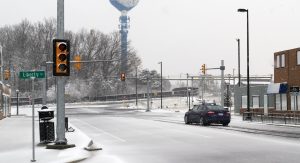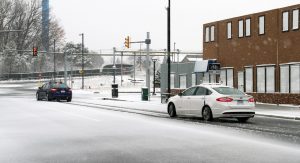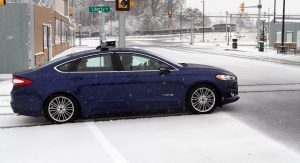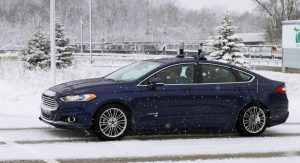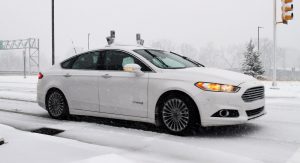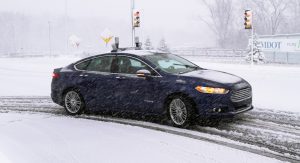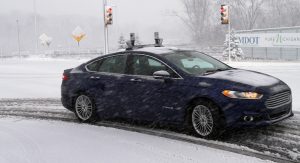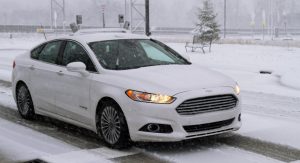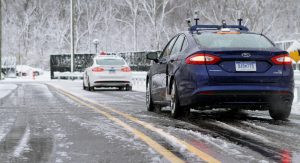After giving us some insight into how their self-driving Fusion Hybrids can see the roads during winter conditions, Ford is now offering a 5-point explanation on what it takes for an autonomous car to drive itself on snow-covered roads.
#1 Using their LiDAR technology, Ford first creates high-res 3D maps during perfect road conditions, so that the self-driving Fusions can use them as a baseline in order to identify their position when the driver isn’t in control. By tracking itself in real-time, the Fusion is able to navigate the road even if it’s covered in snow.
#2 During the environment mapping process, Ford autonomous vehicles collect and process more data within an hour than the average person would in 10 years by using a mobile phone. All in all, the cars collect up to 600 gigabytes per hour – while in the US, an average cellular data plan subscriber uses about 21.6 gigabytes per year.
#3 Ford’s LiDAR sensors are so powerful, they can even identify falling snowflakes and raindrops. However, the system is clever enough not to steer the car clear of every single identifiable object.
#4 Ford autonomous vehicles can precisely locate themselves to within a centimeter, which is much better than just relying on GPS – only accurate to just more than 10 yards.
#5 In addition to LiDAR sensors, Ford also relies on robust 360-degree situational awareness thanks to its sensor fusion process. This type of technology allows the car to keep driving even if one of its sensors becomes inactive, perhaps due to ice, snow or debris buildup on the lens. The American automaker also thinks that eventually, cars might be able to handle ice and grime buildup themselves through self-cleaning and defogging measures.
Ford is currently winter-testing their autonomous Fusion Hybrids in Michigan.



![Ford Explains How Autonomous Fusion Can Navigate In The Snow [w/Video]](https://www.carscoops.com/wp-content/uploads/2016/03/ford-details-autonomous-fusion-in-winter-10.jpg)
